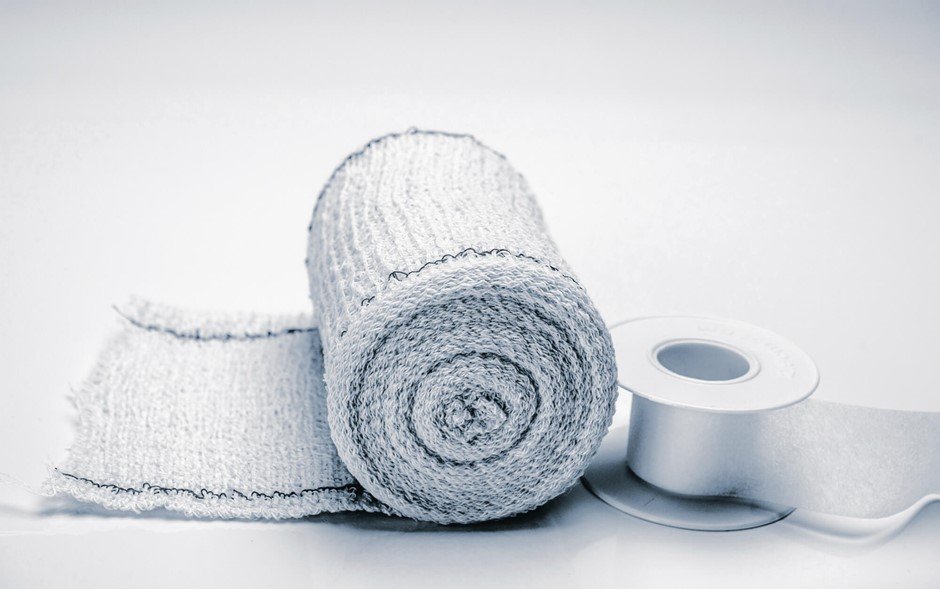If you’ve dealt with enough of them, you know that not every cut is the same. Many of them are minor and can be dealt with adequately with some basic first aid. Others, however, are long, deep, or come with severe bleeding and require treatment from a medical professional.
No matter the kind of cut, you’ll need to administer first aid, even if you need to seek medical assistance.
You’ve got first aid kits posted throughout your workplace, but do you know how to use them when you or a worker needs assistance? In this article, we’ll go over the different kinds of cuts you might deal with and how to treat them.

Different Kinds of Cuts
Cuts don’t just come from sharp objects and things like paper and cardboard. They can also result from blunt objects tearing or crushing the skin, which are most common on bony areas (like fingers, hands, knees, and feet) and may leave swelling, tissue damage, and jagged edges that take longer than usual to heal.
There are a wide variety of cuts, some more severe than others:
- Long or deep cuts
- Cuts that open with the movement of the area (like over a joint)
- Cuts that scar and affect the function of the area (like on an eyelid or lip)
- Cuts that remove all layers of skin and take a long time to heal
- Cuts that damage underlying tissue and may damage nerves, tendons, or joints
- Cuts over a possible broken bone, which may cause infection
- Cuts caused by crushing injuries, which have a high risk of infection
- Cuts with an object stuck inside (like glass or wood)
Handling Minor Cuts
A minor cut is generally defined as one that is less than an inch long and relatively shallow. They may bleed or bruise and there may be some swelling in the immediate area.
Here’s how to take care of them:
- Stop any bleeding by applying direct pressure on the cut with a clean cloth, tissue, or piece of gauze.
- Clean the cut with warm water and soap. Rinse the soap off thoroughly to prevent further irritation. It’s best not to use hydrogen peroxide or iodine, as it can cause tissue damage.
- Protect the wound by applying antibiotic cream and covering with a sterile bandage.
- Keep the bandage as dry and clean as possible and change it daily.
Knowing When to Get Professional Help
In many instances, those four simple steps are all you need to handle a cut. But you need to know when it’s not enough and the cut needs to be treated by a medical professional.
(Read More: what should be in your-first aid kit/).
Call a doctor immediately or go to the emergency room if any of the following occurs:
- The bleeding doesn’t stop after applying continuous pressure for 10 to 20 minutes
- The cut is a deep puncture wound (from a nail gun, for example) that might affect bone and increase the risk of an infection developing
- The cut is more than an inch long or looks especially deep (more than ¼ inch) and may require stitches
- You can see structures below the skin (like bone or tendons)
- The cut is significant and on the face, especially if it affects function (like a cut on the eyelid)
- The person with the cut experiences numbness or tingling sensations
- There is a foreign object stuck inside the cut, such as metal or glass
- The person who has a puncture wound or deep cut has not a tetanus shot in the last five years
(Read More: broken bones workplace first aid basics/)
While you’re waiting for medical help, however, there are first aid steps you should take to manage these deeper or more severe cuts:
- Stop (or mitigate) the bleeding as quickly as possible by applying pressure with a clean piece of gauze or a clean cloth. Keep consistent pressure for at least five minutes. Do not remove the cloth during this time, even if it soaks through.
- If the cut is to the arm or leg, position the limb in such a way that the wound is above the heart. This can help slow bleeding.
- After five minutes of consistent pressure, check to see if the bleeding has slowed or stopped. If the bleeding has ceased, clean around the wound with warm water. If it hasn’t, return to applying pressure. If the initial cloth is soaked through, don’t remove it; instead, layer a clean cloth on top of it.
Conclusion
Cuts are a common workplace injury, so it’s important to know how to treat them. With these basic first aid steps, you can take care of minor cuts and prevent severe ones from getting worse while you wait for medical treatment.



